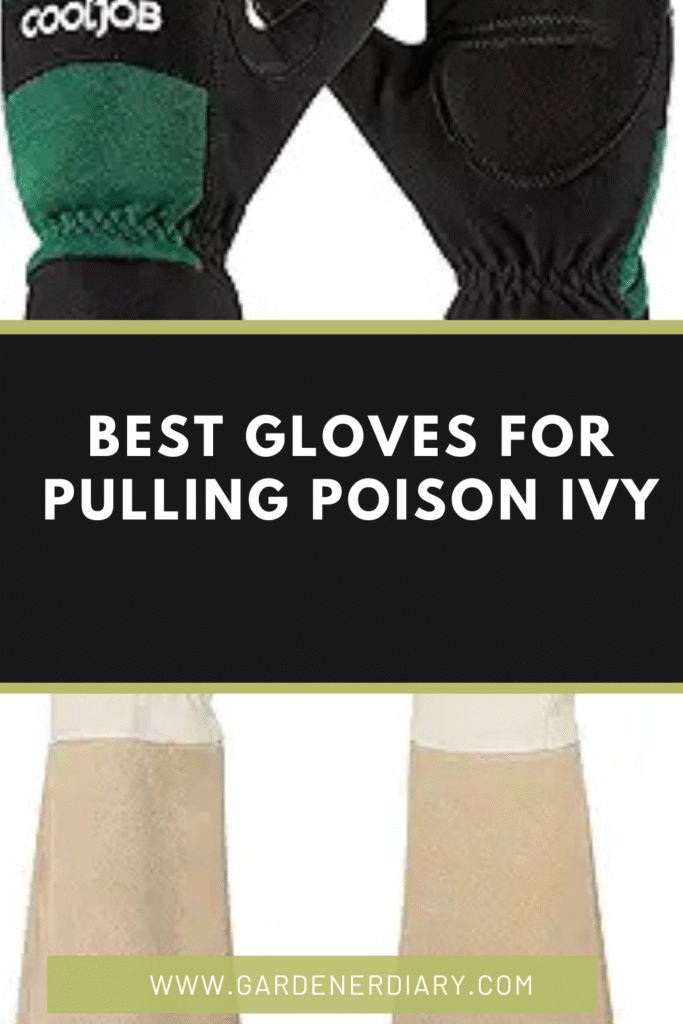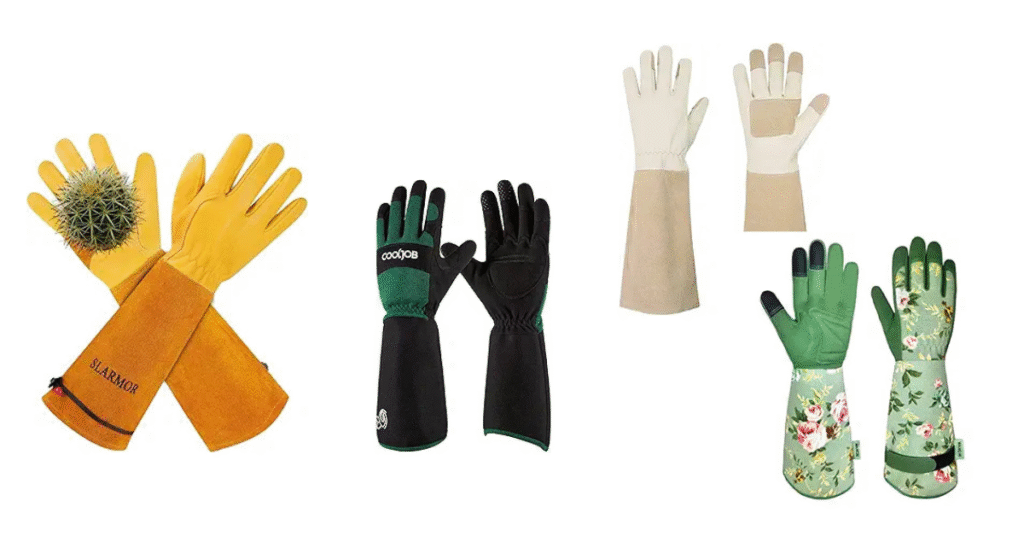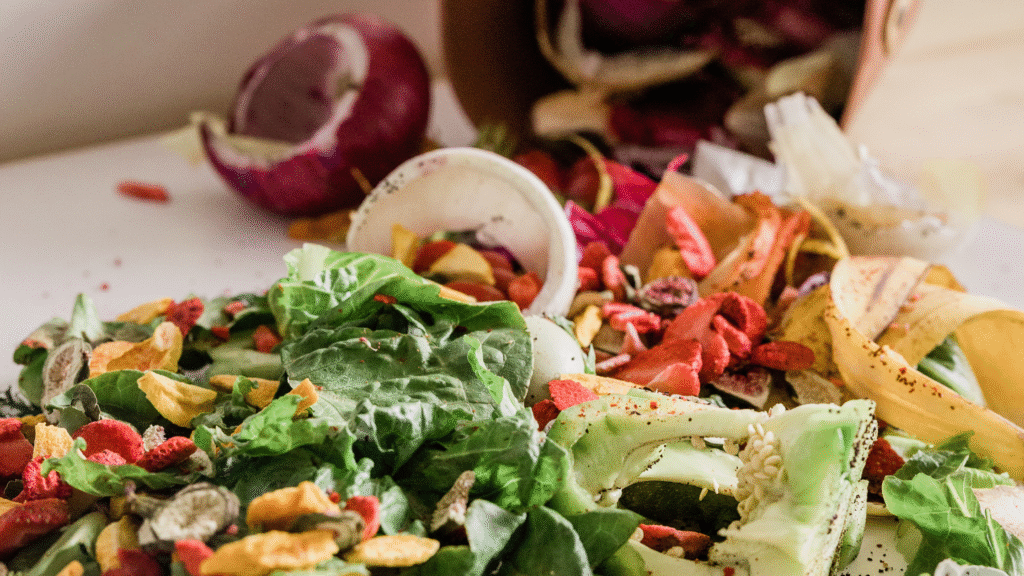Poison ivy is a plant that causes itching, rashes, and discomfort if it touches your skin. The best way to stay safe is by using gloves that block the oil from the plant, called urushiol. Ordinary cotton gloves or thin rubber gloves often fail to protect your hands fully. You need durable, long, and puncture-resistant gloves that keep your arms covered while pulling poison ivy.
This roundup highlights the best gloves for pulling poison ivy. Each option is strong, protective, and comfortable for yard work.
1. COOLJOB Rose Pruning Gloves
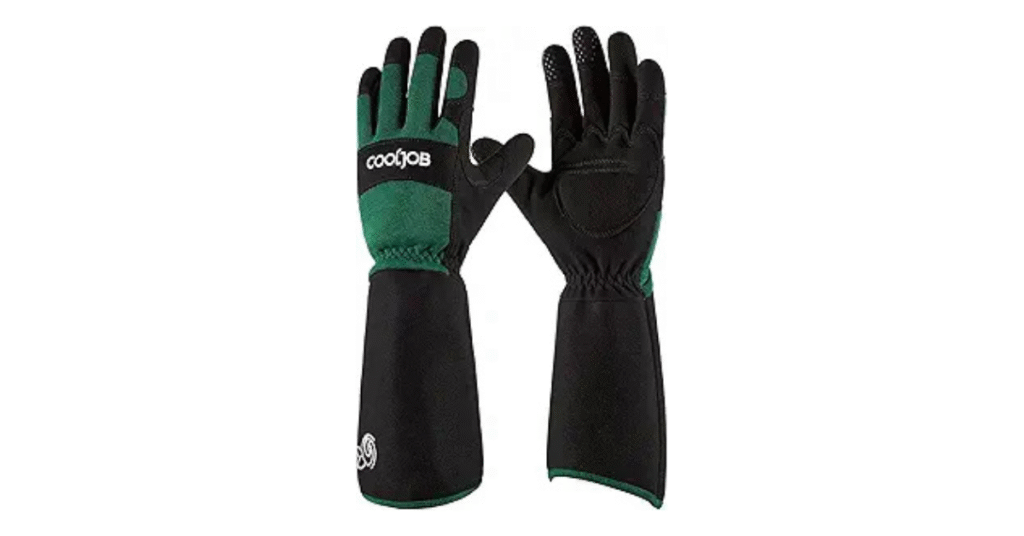
The COOLJOB Rose Pruning Gloves are made for heavy-duty yard work. They are long, padded, and designed to block thorns, sharp branches, and poisonous plants. The gloves cover the arms well, which helps prevent poison ivy contact. They are also machine washable, making them easy to clean after pulling weeds.
Pros:
- Thorn and puncture resistant.
- Long sleeve covers forearms.
- Strong grip for handling tools.
- Machine washable.
Cons:
- Can feel stiff during the first use.
- May be too warm for hot weather.
2. HANDLANDY Pruning Gloves
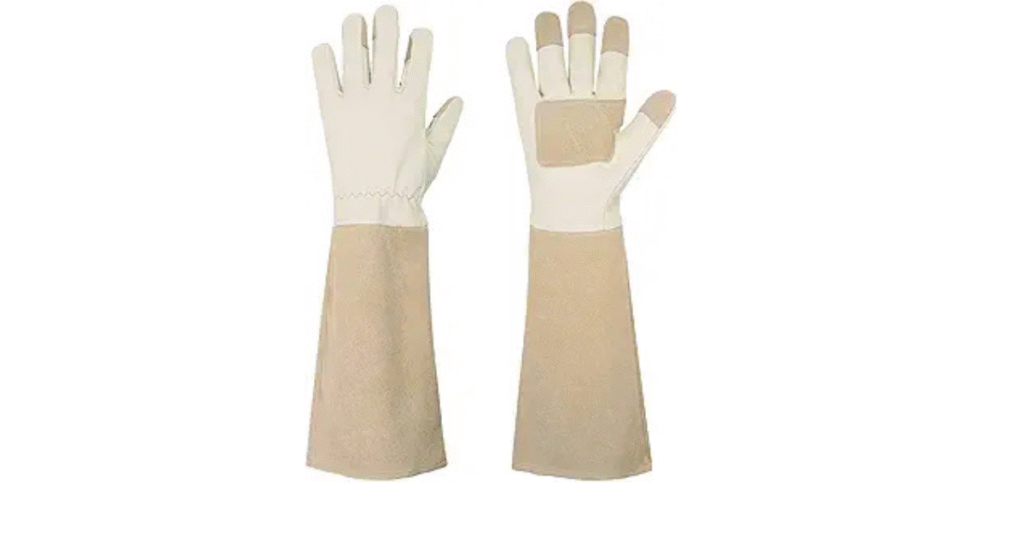
The HANDLANDY Pruning Gloves are made from pigskin leather. They are breathable and flexible while still offering strong protection. The gauntlet-style design extends up the forearm to prevent poison ivy contact. These gloves balance comfort and durability, making them useful for long gardening sessions.
Pros:
- Soft pigskin leather feels comfortable.
- Durable for repeated use.
- Long cuffs protect forearms.
- Breathable material prevents sweating.
Cons:
- Sizes may run slightly small.
- Leather needs care to maintain flexibility.
3. Long Gauntlet Gardening Gloves

The Long Gauntlet Gardening Gloves are heavy-duty gloves made for handling thorny plants and poison ivy. They are designed to cover more of the arm than regular gloves, giving extra protection while pulling weeds. The gloves are durable, making them a practical choice for anyone dealing with dangerous plants.
Pros:
- Extra-long design for full arm protection.
- Strong build for tough yard work.
- Flexible enough for handling weeds.
- Reliable thorn resistance.
Cons:
- Not as breathable as lighter gloves.
- May feel bulky for small tasks.
4. Women’s Leather Garden Gloves
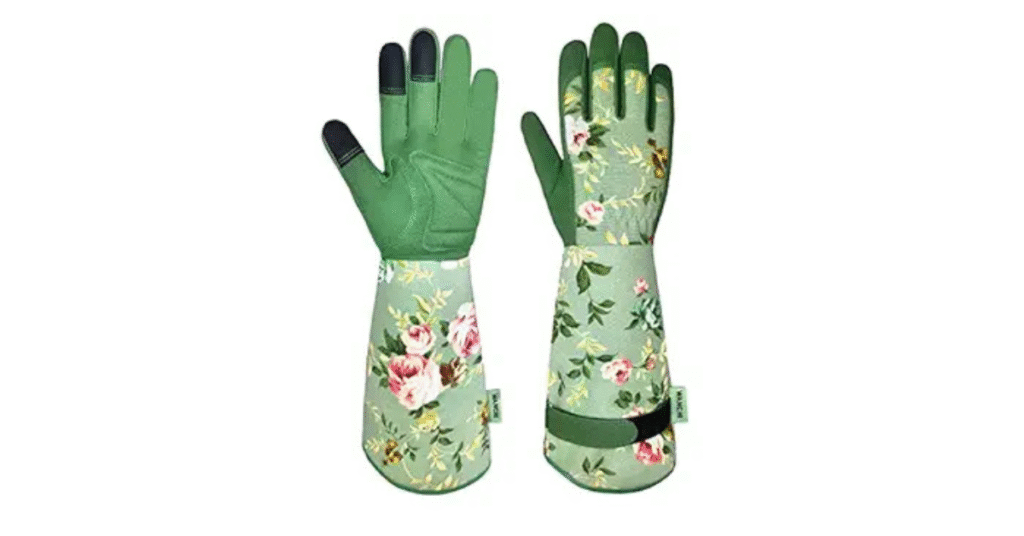
The Women’s Leather Garden Gloves are durable yet stylish gloves made for gardening and yard work. They have a green print design and a soft leather build. These gloves are strong enough to block poison ivy while still being comfortable for longer use.
Pros:
- Attractive design with green print.
- Leather build offers protection and comfort.
- Good fit for women’s hands.
- Durable for repeated use.
Cons:
- Not as long as gauntlet gloves.
- Limited to medium size.
Buying Guide: Choosing the Best Gloves for Pulling Poison Ivy
Buying gloves for poison ivy is not the same as buying ordinary garden gloves. Poison ivy releases an oil called urushiol, which causes rashes and itching. To stay safe, you need gloves that block the oil, protect your arms, and stay comfortable during use. Here are the key things to look for before buying:
1. Material
The material of the gloves determines how much protection you get.
- Leather (pigskin, goatskin, cowhide): Strong and durable, blocks poison ivy oil, and resists thorns. Leather molds to your hands over time but needs care to stay soft. If you prefer tough options, check out this guide on best thorn-proof gardening gloves.
- Synthetic materials (polyester, nylon, or microfiber blends): Lighter and more breathable. They are easy to wash but may not block sharp thorns as well as leather.
- Rubber-coated or nitrile-lined gloves: Extra protection against plant oils and moisture. Best when paired with long cuffs.
Tip: Leather gloves with long cuffs are the safest for poison ivy.
2. Length and Coverage
Short gloves leave your wrists and arms exposed. Poison ivy can brush against your skin while pulling vines, so longer gloves are better.
- Standard gloves: Protect only hands.
- Gauntlet gloves: Extend to the forearm or elbow, keeping arms safe from contact.
Choose elbow-length gauntlet gloves if you deal with heavy poison ivy growth. For family gardening, you might also consider kids’ gardening gloves to protect younger helpers.
3. Comfort and Fit
Pulling poison ivy can take time. Gloves must fit well to avoid slipping or causing blisters.
- Snug but flexible fit: Lets you grip plants and tools easily.
- Breathable lining: Prevents sweating during long work.
- Adjustable cuffs: Keep gloves in place and stop debris from falling inside.
4. Durability
You’ll be dealing with tough plants, branches, and soil. The gloves should handle repeated use without tearing.
- Double-stitched seams increase strength.
- Puncture-resistant padding prevents damage from thorns.
- Machine-washable options make cleanup easier after poison ivy contact.
For more tools that pair well with strong gloves, check this list of best gardening tools.
5. Ease of Cleaning
Urushiol oil can stick to gloves. If you don’t clean them, touching the gloves later can cause a rash.
- Machine-washable gloves save time and remove plant oil effectively.
- Leather gloves should be wiped with rubbing alcohol and air-dried.
- Always wash gloves separately from other clothes.
6. Breathability
Heavy-duty gloves can get hot. If you live in a warm climate, breathability matters.
- Pigskin leather is more breathable than cowhide.
- Gloves with cotton or mesh lining improve airflow.
7. Price vs. Value
You don’t always need the most expensive gloves. Think about how often you’ll use them.
- Occasional use: A good mid-range pair should be enough.
- Frequent use: Invest in durable, long gauntlet gloves that last for years.
Quick Tips for Safe Use
- Always wear long sleeves and long pants in addition to gloves.
- Wash gloves immediately after working with poison ivy.
- Never touch your face or skin while wearing gloves.
- Store gloves in a safe, dry place away from other clothing.
FAQs
Will rubber gloves protect you from poison ivy?
Thin rubber gloves, such as disposable latex or dishwashing gloves, are not reliable protection against poison ivy. The oil from the plant, urushiol, can seep through tiny holes or cling to the surface of rubber. If you touch your skin while removing the gloves, the oil may spread and cause a rash. For safe handling, you need thicker gloves made of leather or long gauntlet gardening gloves that extend up the forearm. Rubber gloves may work as a second protective layer, but they should not be your only defense.
Do I need gloves to handle ivy?
Yes, gloves are essential for handling ivy, especially poison ivy. The plant produces an oil that causes itching, swelling, and painful rashes. Touching the leaves, stems, or roots with bare hands can transfer the oil directly to your skin. Even English ivy, while less harmful, can still irritate sensitive skin. Wearing gloves keeps your hands and arms protected, reduces the risk of infection from scratches, and makes pulling or cutting ivy safer.
What should I wear to remove poison ivy?
When removing poison ivy, full coverage is key. Wear long gauntlet gloves, a long-sleeve shirt, and pants that cover the ankles. Boots provide extra protection for your feet. If possible, tuck your shirt into your gloves and pants into your boots to block any contact. Safety glasses or goggles protect your eyes from sap, and a mask prevents you from breathing in plant dust. Choose old clothing that you can wash immediately after the task, since urushiol can stick to fabric.
What PPE is needed for poison ivy?
Personal protective equipment (PPE) for poison ivy includes long gauntlet gloves, long sleeves, pants, closed-toe shoes or boots, and eye protection. A mask or respirator is recommended if you are cutting or trimming ivy, since airborne particles may carry urushiol. Some people also wear disposable coveralls for maximum protection. The goal of PPE is to prevent skin exposure, block plant oils from spreading, and keep you safe during removal.
What kind of gloves to remove poison ivy?
The best gloves for poison ivy are leather gauntlet gloves or heavy-duty puncture-resistant gardening gloves. They should be long enough to cover the forearm and durable enough to block oils and thorns. Thin cotton or latex gloves do not offer enough protection, since oil can pass through. Look for gloves that are washable or easy to disinfect, since urushiol lingers on surfaces and remains active for months.
How to safely pull poison ivy?
To pull poison ivy safely, wear full protective gear, including long gloves and clothing. Grasp the plant near the root with a firm grip and pull slowly to remove as much of the root system as possible. Avoid breaking the stems, since the sap can release more oil. Place the plants in a heavy-duty trash bag instead of composting them. Never burn poison ivy, because the smoke carries urushiol, which can harm your lungs. Afterward, carefully remove gloves and clothing and wash them separately to prevent spreading the oil.
What kills poison ivy the fastest?
The fastest way to kill poison ivy is by using an herbicide containing glyphosate or triclopyr. These chemicals penetrate the leaves and kill the root system. For a natural method, a mixture of vinegar, salt, and dish soap can be sprayed on the leaves, but it usually requires several applications. Digging out the roots by hand is effective but labor-intensive. Whichever method you choose, always wear protective gear to avoid skin contact.
Is there a safe time to pull poison ivy?
Yes, the safest time to pull poison ivy is during cool weather, such as early spring or late fall, when the plant is less active. In summer, the plant is full of oils and more likely to spread rashes. After a rainfall, the soil is softer, which makes it easier to pull out the roots. However, even in dormant seasons, poison ivy still carries urushiol, so protective gear is always necessary.
What part of poison ivy is poisonous?
Every part of poison ivy contains urushiol oil, including the leaves, stems, vines, and roots. Even dead plants remain poisonous for months or years. Urushiol is a sticky substance that can linger on tools, gloves, clothing, and pet fur. This means indirect contact, such as touching a contaminated surface, can still cause a rash. Always handle poison ivy as if every inch of it is dangerous.
Can poison ivy spread from bed sheets?
Yes, poison ivy can spread from bed sheets if they are contaminated with urushiol. If you touch the plant and then lie down without washing, the oil can transfer to sheets and remain active. Washing contaminated bedding separately in hot water with detergent is the best way to remove the oil. Until cleaned, sheets, towels, and clothing can keep spreading the rash.
How to tell if poison ivy is in your bloodstream?
Poison ivy does not enter the bloodstream. The rash is a skin reaction caused by urushiol contacting the surface of your skin. Some people believe it spreads through blood because the rash appears in different places over time. In reality, new rashes develop when urushiol spreads through touch, clothing, or objects. If you have severe swelling, widespread blisters, or difficulty breathing, seek medical attention immediately.
Does Benadryl help with poison ivy?
Yes, Benadryl can help relieve itching and discomfort from poison ivy. It works as an antihistamine, reducing the allergic reaction that causes irritation. While it won’t remove the rash or heal blisters, it can make symptoms more bearable. For best results, pair Benadryl with calamine lotion, oatmeal baths, or hydrocortisone cream. If the rash is severe or covers large areas of the body, consult a doctor for stronger treatment.
Conclusion
Pulling poison ivy requires the right gloves to prevent skin irritation. Regular gloves may not provide enough coverage or durability. The COOLJOB Rose Pruning Gloves offer heavy-duty protection and long sleeves, making them a top choice for safety. The HANDLANDY Pruning Gloves are a good balance between comfort and durability. The Long Gauntlet Gardening Gloves provide maximum arm coverage, while the Women’s Leather Garden Gloves combine style with function.
Choosing the right pair depends on how much protection and comfort you want. Any of these gloves can help you stay safe while clearing poison ivy from your yard.
